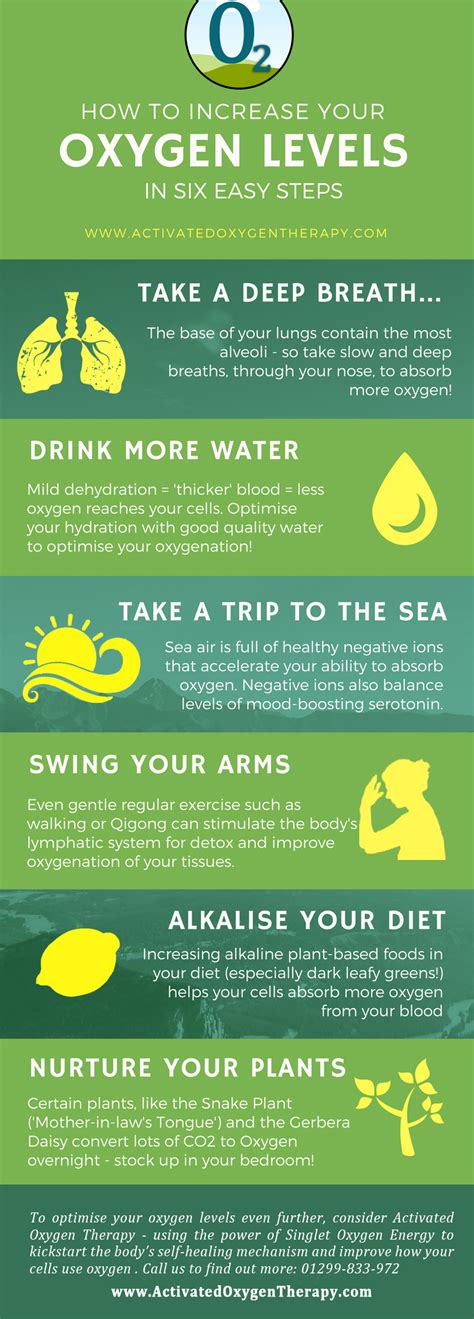How to Increase Oxygen Level Immediately: Quick Tips and Techniques
Feeling short of breath? Low oxygen levels can be alarming, and knowing how to increase your oxygen saturation quickly can be crucial. While this information is for general knowledge and shouldn't replace medical advice, here are some immediate actions you can take to potentially increase your oxygen levels. Always consult a doctor if you experience persistent or severe shortness of breath.
Quick Ways to Potentially Increase Oxygen Levels
These methods can offer temporary relief, but they are not a substitute for professional medical attention if you have a serious underlying condition.
1. Breathe Deeply and Slowly:
This might seem obvious, but controlled breathing is incredibly effective. Deep, slow breaths allow your lungs to take in more air, increasing oxygen intake. Try this:
- Diaphragmatic breathing: Place one hand on your chest and the other on your stomach. Inhale deeply, feeling your stomach rise, and exhale slowly, feeling your stomach fall. Avoid chest-only breathing.
- Box breathing: Inhale for a count of four, hold for four, exhale for four, and hold for four. Repeat several times.
2. Improve Your Posture:
Slouching restricts lung capacity. Sit or stand up straight to allow your lungs to expand fully. Good posture improves airflow and can increase oxygen intake.
3. Move to a Well-Ventilated Area:
Fresh air is essential. Go outside or open a window to increase the oxygen concentration around you. Avoid stuffy, crowded spaces.
4. Hydrate:
Dehydration can affect oxygen transport in the blood. Drink plenty of water to maintain proper hydration.
5. Avoid Irritants:
Things like smoke, dust, and strong fumes can irritate your lungs and reduce oxygen intake. Avoid exposure to these irritants as much as possible.
When to Seek Immediate Medical Attention
While the above techniques might provide temporary relief, it's vital to understand when to seek professional medical help. Seek immediate medical attention if you experience:
- Severe shortness of breath that makes it difficult to talk or walk.
- Chest pain or pressure.
- Bluish discoloration of lips or fingertips (cyanosis).
- Dizziness or lightheadedness.
- Confusion or altered mental status.
These symptoms could indicate a serious underlying health condition requiring urgent medical intervention.
Long-Term Strategies for Better Oxygen Levels
Maintaining healthy oxygen levels is a long-term endeavor. Here are some lifestyle changes to consider:
Regular Exercise:
Regular physical activity strengthens your respiratory system and improves lung function.
Healthy Diet:
A balanced diet rich in fruits, vegetables, and whole grains supports overall health, including respiratory function.
Quit Smoking:
Smoking significantly damages the lungs and reduces oxygen absorption.
Manage Underlying Conditions:
If you have conditions like asthma, COPD, or heart disease, managing them effectively is crucial for maintaining healthy oxygen levels.
Disclaimer: This information is for general knowledge and does not constitute medical advice. Always consult a healthcare professional for any health concerns or before making any decisions related to your health or treatment. The information provided here is intended to supplement, not replace, professional medical care.
